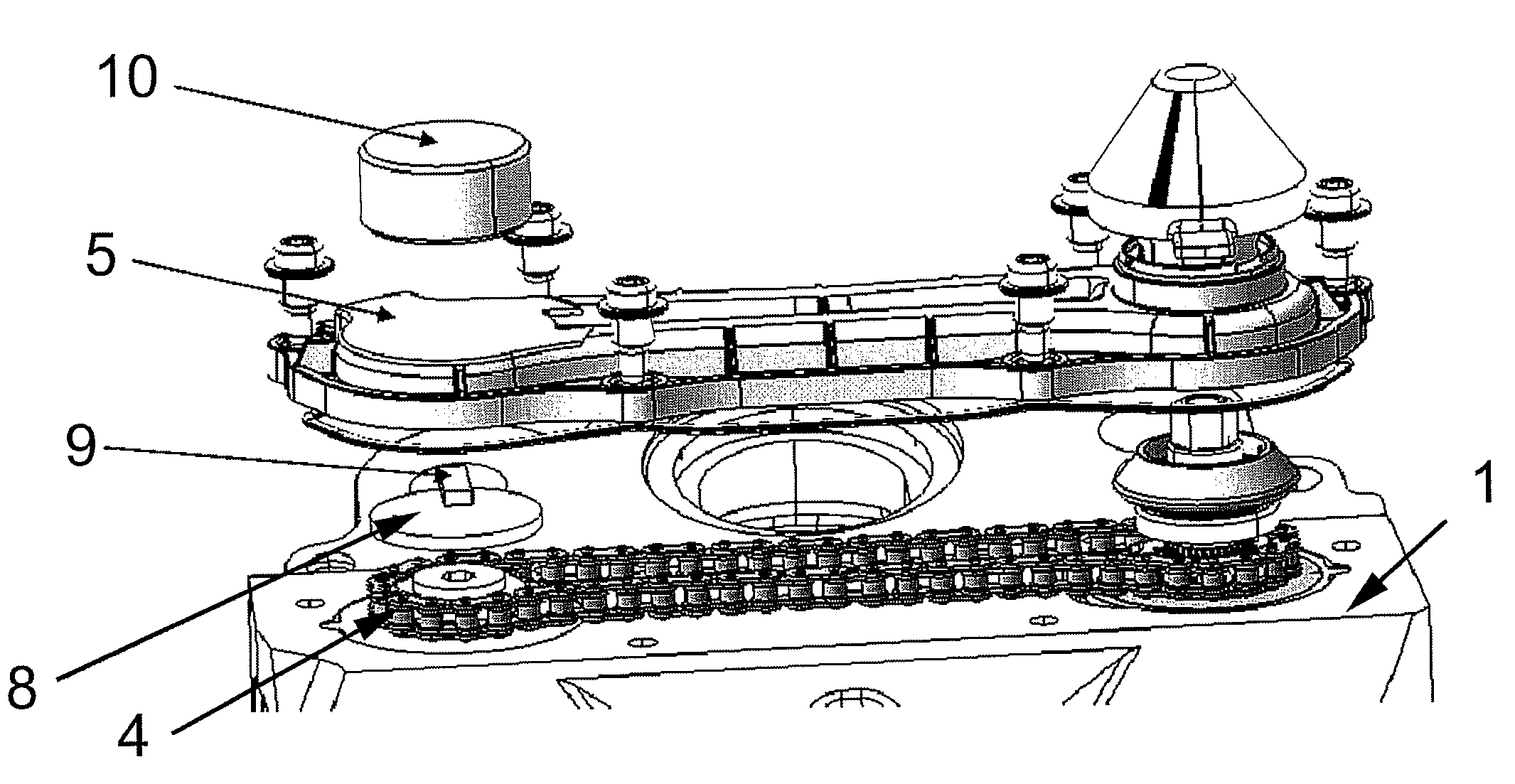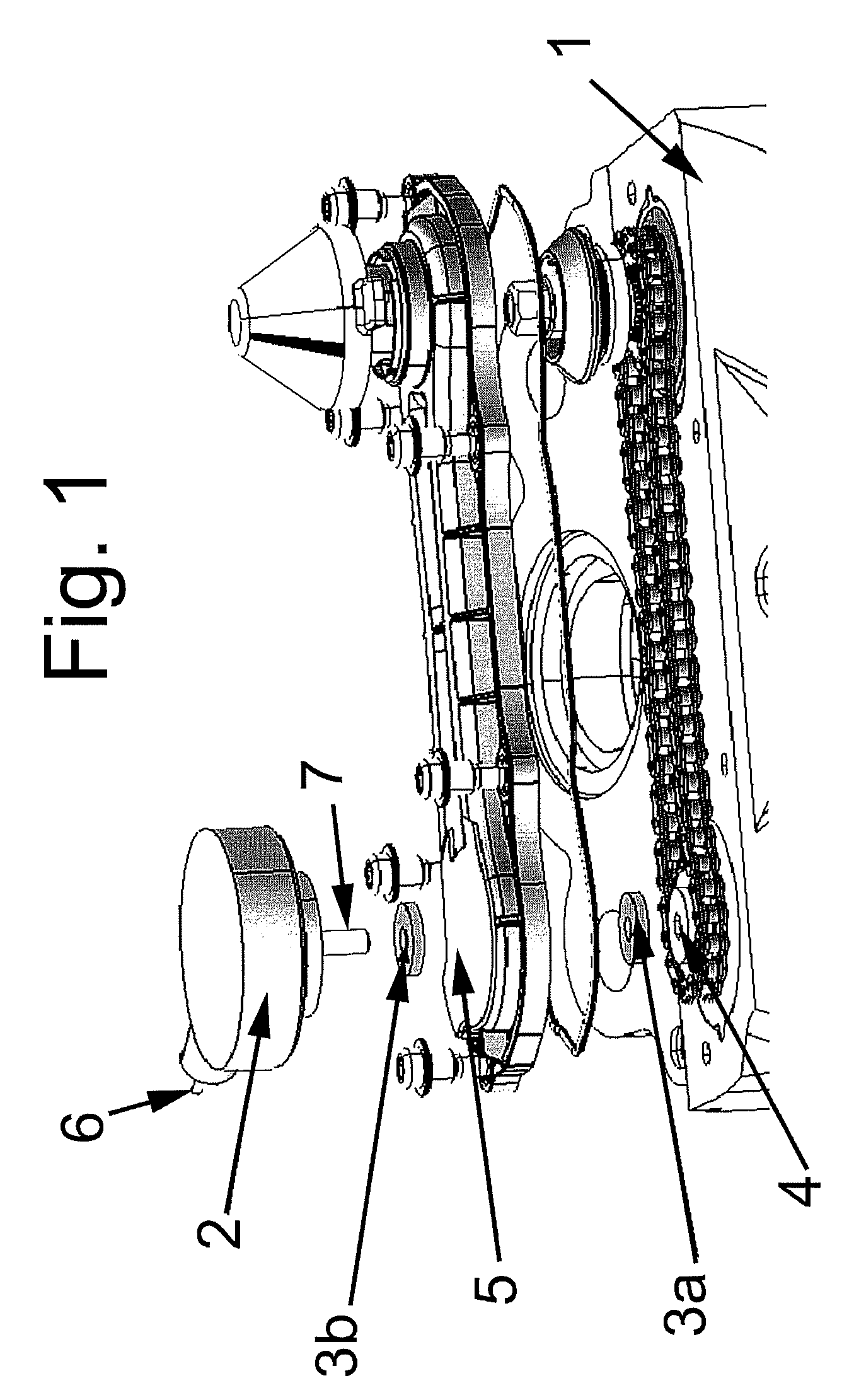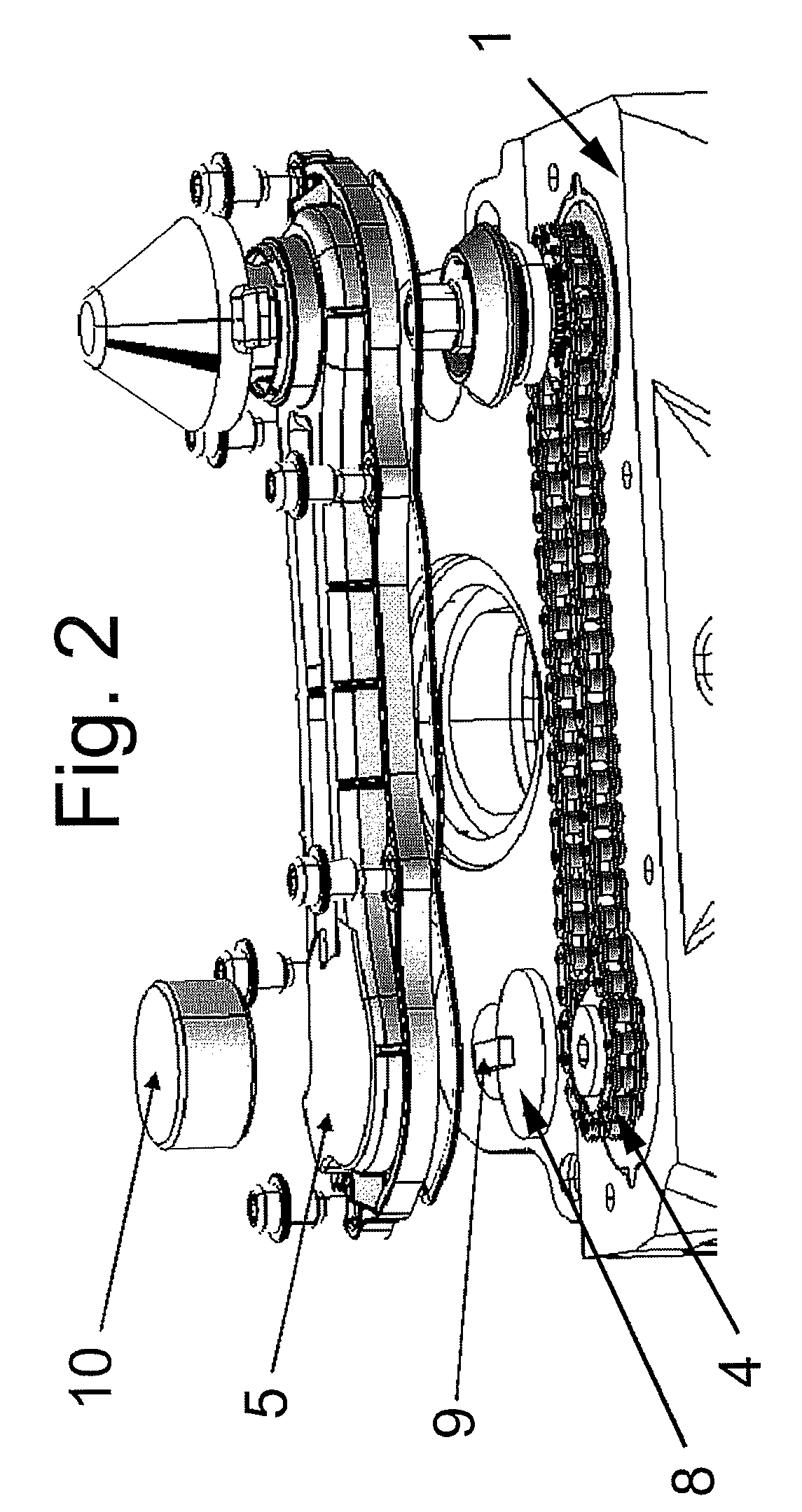Brake lining wear sensor
a technology of wear sensor and brake caliper, which is applied in the direction of instruments, analogue processes for specific applications, force/torque/work measurement apparatus, etc., can solve the problems of readjustment of sensor, complex separation of sensor from brake caliper in order to service the brake or replace the lining, and inability to contact, etc., to achieve easy maintenance, precise and reliable measurement
- Summary
- Abstract
- Description
- Claims
- Application Information
AI Technical Summary
Benefits of technology
Problems solved by technology
Method used
Image
Examples
Embodiment Construction
[0028]FIG. 1 shows a brake caliper 1 with a mechanical adjuster shown thereon, which also can be implemented as an electromechanical adjuster, having a transmission 4 including a chain and pinions to compensate the brake lining wear. The brake lining and the associated actuation cylinder are not shown for reasons of clarity. The transmission 4 comprises a shaft shown in the vicinity of the arrow 4, which shaft moves relative to the brake caliper proportionally to the wear-induced displacement. This rotation is communicated to a sensor 2, for which purpose a contactless coupling is provided, including a pair of magnets 3a, 3b. The transmitter magnet 3a is attached to the shaft and its magnetic force acts, through the housing 5 of the brake caliper or the adjuster, on a receiver magnet 3b located outside the housing 5, which in turn is attached to a rotatable shaft 7. The magnetic clutch consisting of the magnets 3a and 3b is responsible for communicating the rotation of the shaft 4 o...
PUM
| Property | Measurement | Unit |
|---|---|---|
| wear-induced displacement | aaaaa | aaaaa |
| displacement | aaaaa | aaaaa |
| magnetic forces | aaaaa | aaaaa |
Abstract
Description
Claims
Application Information
 Login to View More
Login to View More - R&D
- Intellectual Property
- Life Sciences
- Materials
- Tech Scout
- Unparalleled Data Quality
- Higher Quality Content
- 60% Fewer Hallucinations
Browse by: Latest US Patents, China's latest patents, Technical Efficacy Thesaurus, Application Domain, Technology Topic, Popular Technical Reports.
© 2025 PatSnap. All rights reserved.Legal|Privacy policy|Modern Slavery Act Transparency Statement|Sitemap|About US| Contact US: help@patsnap.com



